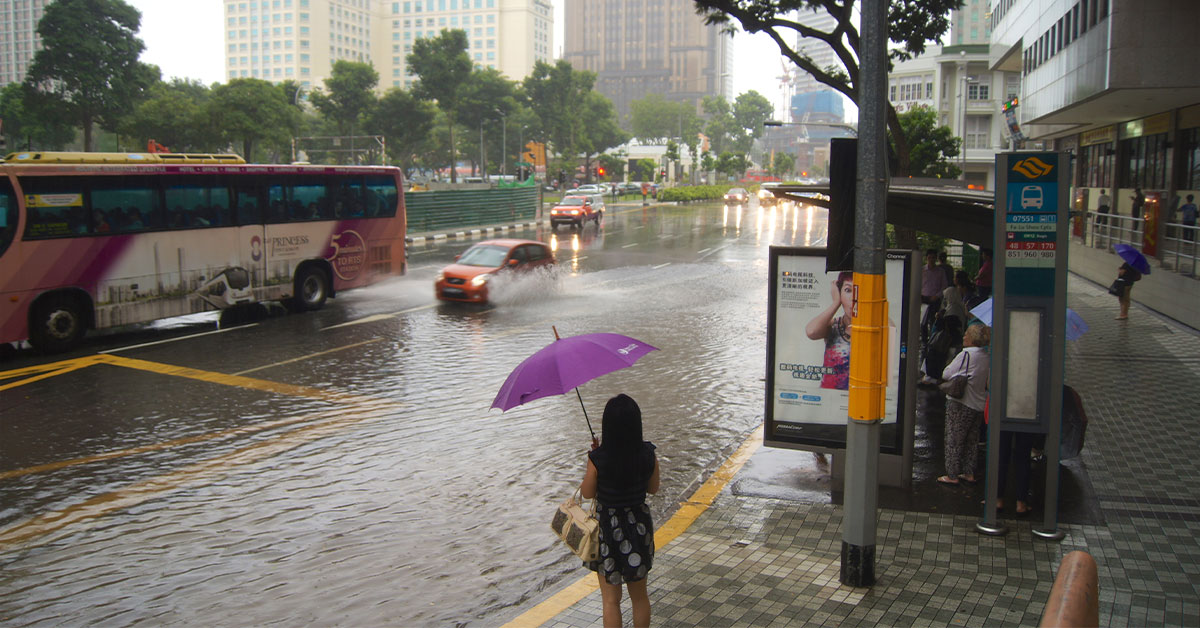It’s supposed to be the dry season now, whereby we’d have to reserve our gratitude for 11 months of fresh air as forests started to burn over in Indonesia.
But with “La Nina”, that might not be the case, and we might see more rain instead.
Which makes you wonder: why would a noodles dish affect the weather?
Thank God for Goody Feed as we simplify what the heck is a La Nina.
More Rain Might be Coming to S’pore Even During Dry Season Due to ‘La Nina’
It might be difficult to predict if it’ll rain tomorrow, but predicting a season is easy.
Reader Bao: Yeah, it’s either dry or wet, so 50% hit rate?
Right, but when it’s dry, it’s usually dry and won’t go off-track, just like my love life.
That’s because people with PhDs would look at the monsoon: a bigly wind that sweeps across the earth. This “big” wind can “blow rain away”, which leads to little rain and therefore a hotter climate.
In fact, to some extent, this is why there are seasons in other countries, from winter to summer. That is, of course, so predictable that school holidays are based upon the seasons.
Technically speaking, over in Southeast Asia, the dry period is between June to August—which also explains why the haze usually comes around July.
But as you probably can tell, mother nature appears to have an SHN, because it’s been rather rainy in recent weeks.
It seems like Circuit Breaker is over for mother nature.
On 16 July 2020, weather.gov.sg, which is part of NEA, indicated that the El Nino Southern Oscillation (ENSO) monitoring system has changed from “Neutral” to “La Nina Watch” status this month.

If NEA is trying to impress us with their chim words, they’ve succeeded.
So what does that mean?
The simplest explanation would be that during this dry season, there could be more rain than usual, which is not normal, but obviously a respite for us.
The simple but still a little complicated explanation is that based on some high-tech thingy to analyse stuff such as the Pacific sea surface temperatures (SSTs), low level winds, cloudiness (using outgoing longwave radiation), and sub-surface temperatures, NEA is now seeing whether La Nina is coming.
You see, ever since cockroaches live in Singapore, two climate phenomena could cause changes in temperature and rainfall, and it’s caused by the temperature of the sea.
With El Nino, it’ll raise the temperature. When it occurs, weatherman would call it the El Nino effect, though we just say it’s hot lah.
And it’s not something that occurs every year—it comes and go, and so does La Nina.
La Nina is the opposite of El Nino, which brings rain and cooler temperature. This is why NEA is “watching”—analysis of the environment shows that La Nina might be coming, which disrupts the usual dry season.
That’s goody, isn’t it?
Well, for a start, it’s just a “Watch”, so don’t bet your money on it yet.
And secondly…
Might Come too Late
Unless you’re Storm from X-Men, you can’t do much but to wait and see what happens next. The next best thing you can do is to analyse the data and predict if La Nina is indeed coming.
According to a weather scientist at the Singapore University of Social Sciences, Associate Professor Koh Tieh Yong, La Nina might come in September 2020 instead—a tad too late since the forest fires would have occurred this or next month.
If you don’t believe his analysis, you can take a look yourself and come out with your own projection:

Reader Bao: I’d rather watch paint dry
According to the experts in weather.gov.sg, they said that based on the models, La Nina-like conditions might occur in the second half of 2020, “but the spread for possible outcomes currently is still too wide to indicate consensus on the exact strength and onset timing of the La-Nina conditions.”
In other words, it’s a “might have rain” prediction they do every day lah.
Nevertheless, even if it doesn’t come, I’m sure you learn something from this article and can show off to your friends that you know what El Nino and La Nina are.
And if you’re wondering why they’ve such weird names instead of generic ones like “Hot Ocean” or “Cold Ocean”, it’s because El Nino, which means “the boy”, was named by Peruvian fishermen after the newborn Christ, which is originally known as El Nino de Navidad.
And La Nina, chosen as the “opposite” of El Nino, is Spanish for “the girl”.
So we’re now waiting for the girl to come, and the girl is supposedly in the MRT based on her GPS location. Once she’s here, we won’t be dry anymore.



